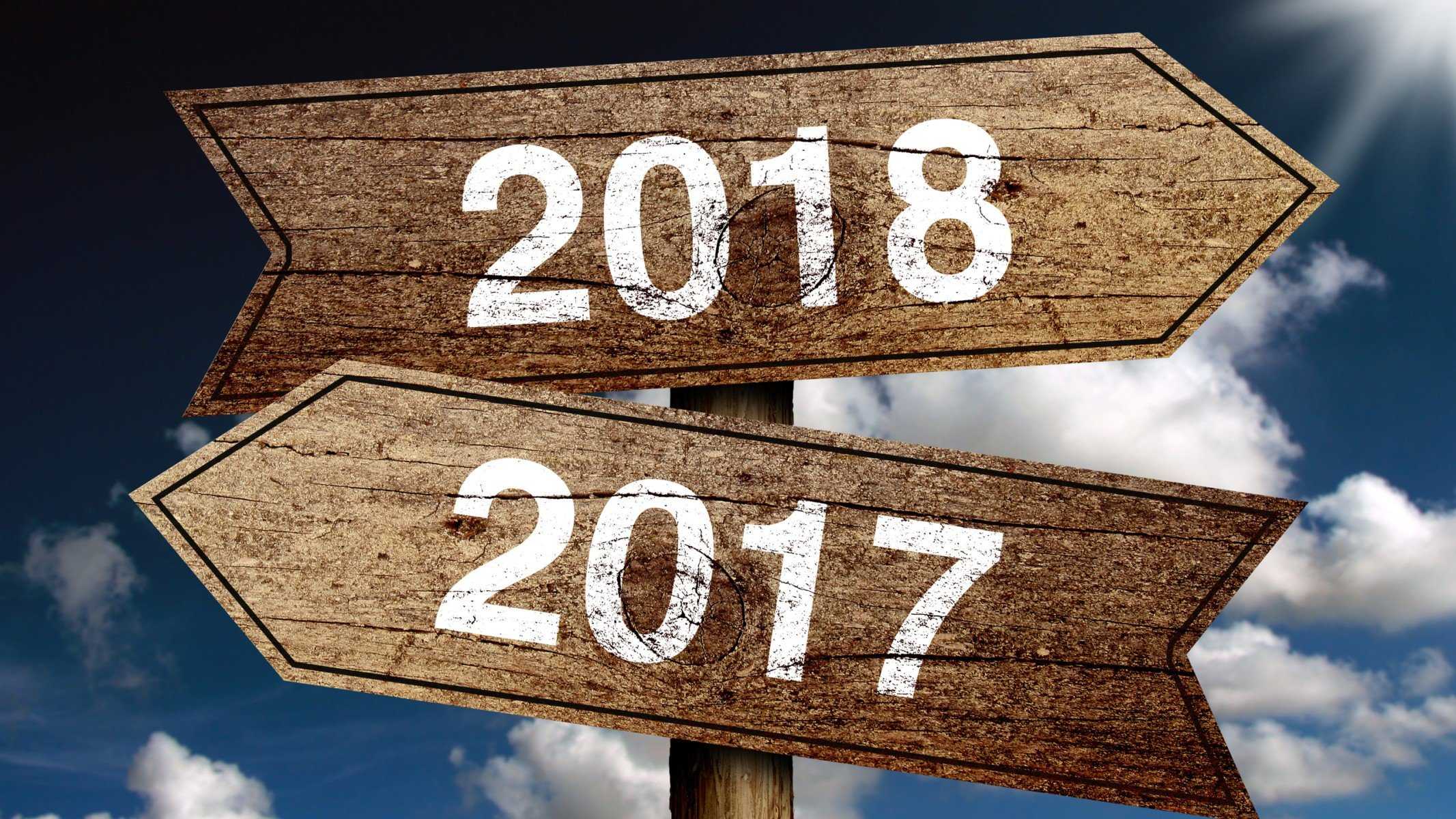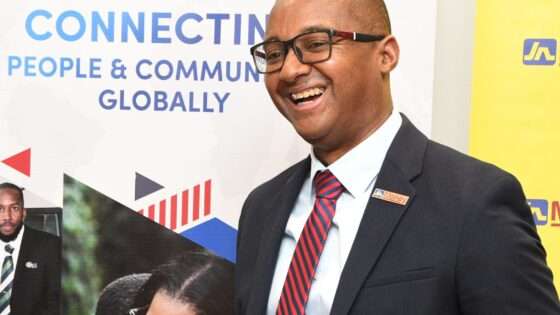on
BY: KABRENA ROBINSON
2017 is one of those years that will forever be etched in our memories for reasons and events that brought forth states of euphoria, melancholy and outrage; for some, extreme losses and monumental gains. In retrospect, it was more so “the year of the woman”. A year that saw many movements and protests for women and minorities. A year where women of colour and minorities despite adversities excelled and made their voices heard. A year that we were able to witness a great surge of unity and togetherness across the world in circumstances of turmoil and tragedy. 2017 was a year that forced the world to keep their eyes open and it all started in late 2016 leading up to early January.
The Exist of Obama and a New Trump Era
One major event that push started various events throughout the year was the 2016 presidential election. It was an event that promised some degree of change on both ends. What the entire United States of America had to anticipate was the election of their first female Democratic president Hillary Clinton or Donald Trump, the controversial conservative Republican candidate whose entire election campaign was marked by accusations of his racist, homophobic, xenophobic and misogynistic views. To much of the world’s surprise, it was Trump who excelled in the end, becoming the 45th President of the United States. This event was historical not because it brought about needed change but because it ignited anger and displeasure from the general American public who on that night of November 8, 2016, witnessed the unforeseen. With a farewell to President Obama, the first black president of the United States, came President Donald Trump, a contrast in comparison to his predecessor Obama. And so, 2017, started off in a dim melancholy mood and on January 20, 2017, Donald John Trump was sworn in as the 45th President of the United States in Washington DC.
A Wave of Resistance
While Trump supporters cheered on for their new president, hope and resistance emerged from fear and discontent among Trump’s opponents. This led to worldwide “anti-trump” protests that saw up to two million people around the world, mostly women taking the streets in various cities and countries in opposition to the new president. This gave way to the birth of a new political movement that swept across 2017. Deemed as the largest ever inauguration protest, women, men and children gathered in Washington DC on January 21, 2017, in a strident yet peaceful scene. It was reported that there were also more than 600 “sister marches” across the US and around the globe in countries such as Canada, Australia, New Zealand, Germany, France, Hungary, Switzerland and the Czech Republic. This great phenomenon in the US caused a ripple effect on the rest of world catalyzing a new wave of unity and female empowerment in all corners of the world.
Protests and Female Empowerment
What most would describe as the beginning of an increased surge in third wave feminism and resistance, led the way for a year that allowed more women and minorities to become the faces and voices of various progressive movements. These protests included immigrant rights rallies in response to Trump’s xenophobic remarks, the People’s Climate March, protests following Trump’s Deferred Action for Childhood Arrivals (DACA)decision, protests against the building of the Dakota Access Pipeline (#NODAPL) and the “Muslim Ban” protest. The most impactful protests, however, were the ones in solidarity with women speaking out against gender-based assaults. Many protests ignited from a list of sexual misconduct accusations made against Donald Trump. This led to many international campaigns on social media. The hashtag #MeToo started by Tarana Burke ten years ago was reignited after a tweet from actress Alyssa Milano following the news of the Harvey Weinstein assault cases took over major headlines. Since then, there has been an ongoing worldwide discussion about sexual harassment and nationwide conversations about the #MeToo campaign it inspired. According to data by UN Women, 35% of women around the world has experienced physical or sexual violence. This does not include the amount that goes unreported.
Meanwhile, in Canada, The Globe and Mail launched an in-depth investigation that highlighted a huge number of sexual assault cases categorized as “unfounded” which led a nationwide discussion into how sexual assault cases are dealt with in Canada.
Female Empowerment in The Caribbean
While the world was focused on the many events taking place in western society, women in the Caribbean were also leading their own wave of female empowerment through social media campaigns. The #lifeinleggings social media movement was started by Ronelle King in Barbados to spread awareness on the different encounters Caribbean women experience with sexual violence. The online movement led to marches in Barbados, Trinidad and Tobago, Antigua and Barbuda, Dominica, the Bahamas and Guyana. In Jamaica, another advocacy group called the Tambourine Army, led a movement against sexual violence and child abuse. The militant group came into full effect after numerous sexual assault cases against prominent religious leaders arose in the media. According to a 2015 United Nations statistics, the Caribbean has among the highest rates of sexual assault in the world; one in three women have experienced sexual or physical assault at least one in their lives. These various movements throughout the year assisted in shining a light on a normalized phenomenon that has been plaguing the Caribbean community. So, for the Caribbean and the rest of the world, 2017 saw a huge insurgent of female empowerment and feminism.
In the midst of the uproar around gender-based violence, Jamaica also made way for the beginning of a new era when it said farewell to former Prime Minister Portia Simpson-Miller in late June. Simpson-Miller who was the first female head of government of Jamaica and the third in the Anglophone Caribbean, following Eugenia Charles of Dominica and Janet Jagan of Guyana. Simpson-Miller was a symbol of revolution for female empowerment in Jamaica breaking the cycle and excelling in a field dominated by male elites for decades. The exit of Simpson-Miller who had served the island for over forty years in politics left an air of possibility for female advancement and empowerment across the island.
More Wins from Society’s Women and Minorities
While most of the year was marked by a large focus on dismantling sexual assault, there were also many minor and major ‘win moments’ for women across the world. In September of this year, Saudi Arabia agreed to let women drive (set to take effect on June 2018), ending a longstanding policy that has become a global symbol of the oppression of women in the ultraconservative nation. Another ‘win moment’ this year was when actress Viola Davis made history by becoming the first black actor or actress to achieve a “triple crown” by winning acting awards at the Oscars, Emmys and Tonys. ‘Win moments’ from women such as Tennis champion Serena Williams to Olympic Fencer Ibtijaj Muhammad; political figures like Maxine Walters to Karmala Harris; breakthrough personalities with inspirational stories such as Cardi B and Tiffany Haddish. Wins from women in various fields came in all forms. The year also saw the increase in the number of women and minorities running for political offices in the US, Canada and other countries worldwide.
Diversity in Canadian Politics
In Canada, on October 1st, Jagmeet Singh won the federal NDP leadership race becoming the first visible minority to lead a major Canadian federal party. The criminal lawyer from Scarborough Ontario became the first turban-wearing Sikh to sit in Ontario’s legislature in 2011 then later served as the NDP’s critic for justice and consumer services before becoming the party’s deputy leader in 2015. Singh’s victory ignited nationwide celebration putting into focus the scarcity of minority officials present in Canadian politics. For many, the victory was regarded as a progressive step forward for equality and representation of minorities and people of colour in Canada. This was a monumental moment for a nation that prides itself on being a “multicultural haven”. For the voices of minorities and people of colour in Canada to be heard, representation is a vital step.
Canada 150 and the Controversy
On another celebratory note, this year July 1st in Canada was marked by jubilant Canada 150 celebrations regarded as the sesquicentennial of Canadian Confederation. The official day and days leading up July 1st were packed with a wide range of Canada 150 themed events and celebrations. The anniversary marked the year that the British North America Act was passed by the British parliament, paving the way for colonies of Canada – which included Ontario and Quebec – to join Nova Scotia and New Brunswick in creating a single Dominion of Canada.
However, for many, the affair was seen as dismal rather than one worth celebrating. Many members of the Indigenous community and allies across Canada saw the 150 celebrations as a mark of decades of oppression and colonization and sought changes to the celebrations to recognize a history that stretches back centuries. A history that shows a great degree of mistreatment and injustice towards Canada’s indigenous community. This lead to the social media hashtag #Resist150, aiming to remodel the meaning being Canada 150. Cases of missing and murdered indigenous women, to substandard indigenous communities and numerous accounts of injustices at the hands of the Canadian justice system and matters relating to indigenous peoples, have always been a pressing social issue across the country and the Canada 150 celebrations this year reignited the necessary conversations around those affairs.
50 Years of Mas in Toronto
Another focal celebration in Canada this year was the milestone of 50 years of the Toronto Caribbean Carnival commonly known as “Caribana”. For members of the Caribbean diaspora in Toronto, the annual highly anticipated occasion is regarded as a vital aspect of Caribbean life in the city. This year, the festival achieved a milestone of half a century of its kaleidoscopic display of signature costumes, Caribbean music and rich culture boasting the title as one of the largest cultural festivals in North America. Since its inception in 1967 as part of Canada’s centennial birthday, the Caribbean Carnival has grown into a multimillion-dollar event that has solidified itself as one of Toronto’s major cultural attractions. This year, the celebration went on with the promise of a long and steady future for mas in the city.
From Celebrations to Devastation
Though the year was marked by many celebrations, protests and outrage, there were also those moments that left parts of the world in literal shambles, that had many of us glued to our televisions or alternative news outlets in safety but in disbelief of the turmoil and loss of those at the hands of both natural and man-made disasters. 2017 saw many incidents of man-made catastrophes such as mass shootings, hate crimes and terrorism and natural disasters such as earthquakes, hurricanes and wildfires.
Terrorism and Turmoil
Terrorist attacks devastated many cities and countries across the world. Some incidents in America have been argued to be a ripple effect of the Trump presidency like the Neo-Nazis, alt-Right and supremacist rally in Charlottesville in August held to protest the planned removal of Confederate Gen. Robert E. Lee’s statue. The violent, white supremacist rally left one woman dead and thirty-five injured after a car ploughed down multiple people who were protesting the “Unite the Right” rally. This was the height of increased resurgence of white supremacy and hate crimes across America following the Trump presidency.
Later in the year on October 1st , a gunman opened fire on a crowd of 22,000 at the Route 91 Harvest country music festival in Las Vegas, killing fifty-nine and injuring more than fifty-one. The tragedy is regarded as the worst mass shooting in modern American history.
These acts of terror were also taking place in other parts of the world. On March 22nd, London was left reeling after two uncoordinated terrorist attacks struck the heart of the capital less than three months apart. Attacker Khalid Masood ploughed his car into several pedestrians on Westminster Bridge, killing four and injuring around fifty others. A couple months later on May 22nd, a suicide bomber detonated an explosive outside an Ariana Grande concert at the Manchester Arena on. In total, twenty-two people were killed and more than fifty were injured, with the youngest victim being eight years old. Tragedy also struck Barcelona on Aug. 17th, 2017 in a terrorist attack that was claimed by the Islamic State, a van ploughed through the crowded Las Ramblas area killing thirteen people and injuring more than 100.
But while our eyes were on the western world, there were quite a few tragedies taking place in other countries. Somalia faced its worst-ever attack after a truck bomb blasted through the capital on Oct. 14th, 2017. More than 500 people were killed and even more injured in the gruesome attack. As of December, nearly seventy people were still missing.
In Libya, migrants are currently being sold as slaves. In October 2017, a CNN team travelled to Libya and witnessed a dozen men auctioned, some for as little as $400 US each. The crew was also informed on auctions taking place at nine locations in the country. Slavery in Libya has a long history and a lasting impact on the Libyan culture. It is closely connected with the wider context of slavery in North America and the Arab slave trade. According to CNN, Libya is the main transit point for refugees and migrants trying to reach Europe by sea. In each of the last three years, 150,000 people have made the dangerous crossing across the Mediterranean Sea from Libya. For four years in a row, 3,000 refugees have died while attempting the journey. Head of Libyan immigration has urged countries from which migrants travel to take more responsibility, in response to outrage on slave auctions.
Natural Disasters Struck the Americas and Caribbean
The year was also marked by a series of natural disasters that swept through cities in the US, Central America and the Caribbean. Harvey put Houston under water and in despair back in August, leaving at least eighty-two people dead and causing damages of nearly $200 billion. The category 4 hurricane also ripped through Louisiana, Barbados, and other areas of Texas.
On the anniversary of the deadly 1985 Mexico City earthquake, Central Mexico was struck again on Sept. 19th, 2017, by a powerful 7.1-magnitude quake that killed at least 370 people across the region, including 228 in Mexico City. Puerto Rico was left in a state of crisis after Hurricane Maria pummelled the island as a Category 4 storm on Sept. 20th, 2017, killing 499 people and devastating much of the island. Most of the island remains affected by the aftermath of the hurricane with many areas still without electricity and water.
In the Caribbean region, the biggest devastation was hurricane Irma in late August that was deemed as the longest-lived Atlantic hurricane since 2004. The category 5 storm ripped through the Caribbean with 185 mph winds leaving a trail of extensive damage in islands such as Haiti, Cuba, St Martin and Maarten, Antigua and Barbuda, Anguilla, Turks and Caicos, The British Virgin Island and The US Virgin Islands. Many islands are still recovering from the catastrophe that left 134 dead and caused damage worth more than $100 billion. Now three months after both hurricane Irma and Maria terrorized and destroyed many homes in the Caribbean, thousands of citizens remain without basic necessities such as clean water, social services and shelter.
A Call for the World to Take Heed
The main thing that can be gathered from these many tragedies, is that in moments of disasters whether natural or man-made, the rest of the world is willing to help. The problem, however, lies with how various stories overshadow some. Incidents that occur in western society are often reportedly on widely which assists in helping a select few in moments of despair and obtaining solidarity from the rest of the world. However, tragedies outside of the western world are often short-lived in the media. This poses a huge problem as many of these countries are developing nations more in need of assistance in moments of immense chaos. It is not to be left to the media but to us as citizens of the word to turn our gazes at these issues outside of our bubble. For 2018, this should be taken into consideration.
In 2017 we have witnessed a lot of changes some welcoming some not so much, but what remains to be most important is how we deal with these changes heading into the new year. We have seen the election of an unfavourable president in one of the most powerful countries in the world, we have seen movements of liberation and resistance, we have witnessed a wave of hate influenced crimes and tragedies, we have celebrated and we have wept. There is no telling what 2018 promises but as a community and members of a larger part of society we can all contribute by doing our part. This involves staying informed, starting the necessary conversations, spreading messages of unity and empowerment, helping those in need and most of all being agents active in catalyzing the positive changes that we would want to see in the world.
Stay in the loop with exclusive news, stories, and insights—delivered straight to your inbox. No fluff, just real content that matters. Sign up today!












